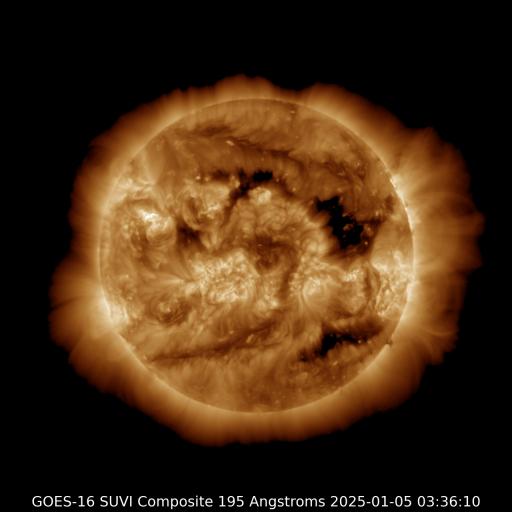Viewing archive of Saturday, 29 November 2014
Daily bulletin on solar and geomagnetic activity from the SIDC
Issued: 2014 Nov 29 1223 UTC
SIDC Forecast
Solar flares
Eruptive (C-class flares expected, probability >=50%)
Geomagnetism
Quiet (A<20 and K<4)
Solar protons
Quiet
| 10cm flux | Ap | |
|---|---|---|
| 29 Nov 2014 | 184 | 006 |
| 30 Nov 2014 | 186 | 007 |
| 01 Dec 2014 | 188 | 007 |
Bulletin
NOAA 2222 continues its steady growth, with some magnetic polarity mixing in the middle portion and just behind the main leading spot. It produced 3 C-class flares, including the strongest event of the last 24 hours (an impulsive C6.7 peaking at 08:21UT). Nearly spotless NOAA 2224 (Catania 22) and NOAA 2219 produced resp. 1 and 4 C-class flares. The other sunspot regions were quiet, with an active region rounding the southeast limb. A large filament on the northern hemisphere just west of the central meridian erupted on 28 November between 14:30 and 17:00UT. The eruption may have been triggered by some activity in reversed polarity region NOAA 2223, at the south end of the filament. There does not seem to be an obvious CME associated to this event. None of the observed CMEs is Earth directed. C-class flaring is expected, with a small chance on low- level M-class flares. Solar wind speed varied between 350 and 410 km/s. The IMF is directed towards the Sun, with Bz mostly positive varying between 0 and +12 nT. Brief negative excursions to -12 nT were observed near 12:00UT (28 November) and between 03:00-04:00UT (29 November). The geomagnetic field was quiet to unsettled (K<4) and is expected to remain so.
Today's estimated international sunspot number (ISN): 118, based on 13 stations.Solar indices for 28 Nov 2014
| Wolf number Catania | /// |
| 10cm solar flux | 181 |
| AK Chambon La Forêt | 008 |
| AK Wingst | 003 |
| Estimated Ap | 003 |
| Estimated international sunspot number | 103 - Based on 16 stations |
Noticeable events summary
| Day | Begin | Max | End | Loc | Strength | OP | 10cm | Catania/NOAA | Radio burst types | |
|---|---|---|---|---|---|---|---|---|---|---|
| None | ||||||||||
Provided by the Solar Influences Data analysis Center© - SIDC - Processed by SpaceWeatherLive
All times in UTC
Current data suggests there is a moderate possibility for aurora to appear at the following high latitude regions in the near future
Gillam, MB, Yellowknife, NTCurrent data suggests there is a slight possibility for aurora to appear at the following high latitude regions in the near future
Edmonton, AB, Iqaluit, NU, Saskatoon, SK, Whitehorse, YTNuuk
Juneau, AK
Latest news
Latest forum messages
Support SpaceWeatherLive.com!
A lot of people come to SpaceWeatherLive to follow the Sun's activity or if there is aurora to be seen, but with more traffic comes higher server costs. Consider a donation if you enjoy SpaceWeatherLive so we can keep the website online!

Latest alerts
05:15 UTC - Hemispheric Power Index
The OVATION model predicts the Hemispheric Power Index to reach 50GW at 06:02 UTC
00:55 UTC - Coronal hole
A southern hemisphere coronal hole is facing Earth. Enhanced solar wind could arrive in ~3 days
Monday, 7 April 2025
20:45 UTC - Geomagnetic activity
Active geomagnetic conditions (Kp4) Threshold Reached: 20:39 UTC
17:33 UTC - Hemispheric Power Index
The OVATION model predicts the Hemispheric Power Index to reach 51GW at 18:18 UTC
Space weather facts
| Last X-flare | 2025/03/28 | X1.1 |
| Last M-flare | 2025/04/05 | M1.0 |
| Last geomagnetic storm | 2025/04/06 | Kp5 (G1) |
| Spotless days | |
|---|---|
| Last spotless day | 2022/06/08 |
| Monthly mean Sunspot Number | |
|---|---|
| March 2025 | 134.2 -20.4 |
| April 2025 | 151.3 +17.1 |
| Last 30 days | 135.2 -4.5 |




